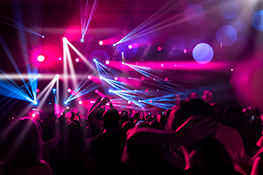Stage Lighting Design: More Than Just Lights, It’s Storytelling
The Unsung Hero of Theatrical Production
Stage lighting. Often overlooked, yet fundamentally crucial to a successful theatrical production. It’s more than just illuminating the actors; it’s a powerful storytelling tool, capable of shaping emotions, setting the mood, and guiding the audience’s eye. A skilled lighting designer is an artist in their own right, weaving a visual narrative that complements and enhances the performance.
Beyond Illumination: Shaping Emotion and Atmosphere
Consider the impact of a single spotlight. It can isolate a character, highlighting their vulnerability or power. A wash of deep blues can create a sense of mystery and foreboding, while warm golds evoke feelings of comfort and nostalgia. The subtle shift from cool to warm tones can underscore a character’s emotional arc, revealing their internal struggles without a single spoken word. This is the artistry of lighting design – the ability to paint with light and shadow, creating a visceral response in the audience.
The Technical Mastery Behind the Magic
The creation of such evocative scenes is far from accidental. It requires a deep understanding of lighting technology, including the various types of fixtures (LED, tungsten-halogen, moving lights), their capabilities, and their limitations. A lighting designer must master the art of color mixing, creating specific hues and intensities to match the director’s vision. They must also coordinate lighting cues with sound and other elements of the production, ensuring seamless transitions and a unified artistic experience.
Collaboration and Communication: The Keystone of Success
Effective stage lighting design isn’t a solitary pursuit. It demands close collaboration with the director, set designer, and other members of the creative team. Open communication is essential to translating the director’s artistic vision into a practical and visually stunning lighting design. The designer must understand the story’s narrative arc, character development, and thematic elements to create lighting that amplifies these aspects.
The Future of Stage Lighting: Technology and Innovation
The world of stage lighting is constantly evolving, with new technologies emerging that offer exciting possibilities. LED lighting, for instance, provides energy efficiency and unparalleled color control. Moving lights enable dynamic and complex lighting effects that were once impossible. The integration of lighting control software further streamlines the process, allowing for precise and responsive adjustments during the performance. This technological advancement continues to empower lighting designers, pushing the creative boundaries of the art form.
SEO Keywords:
Stage lighting design, theatrical lighting, lighting design, stage lighting, lighting designer, lighting technology, LED lighting, moving lights, theatrical production, lighting cues, color mixing, lighting control software, lighting techniques, show lighting, event lighting
Conclusion: The Power of Light
In conclusion, stage lighting design is far more than simply illuminating a stage; it’s a powerful narrative tool, an integral part of the storytelling process. It shapes emotion, sets the atmosphere, and guides the audience’s gaze, creating a truly immersive and unforgettable theatrical experience. The skillful use of light and shadow, coupled with technical mastery and collaborative spirit, transforms the ordinary into the extraordinary, making it an indispensable element of any successful stage production.


 Auditorium Construction Services
Auditorium Construction Services 